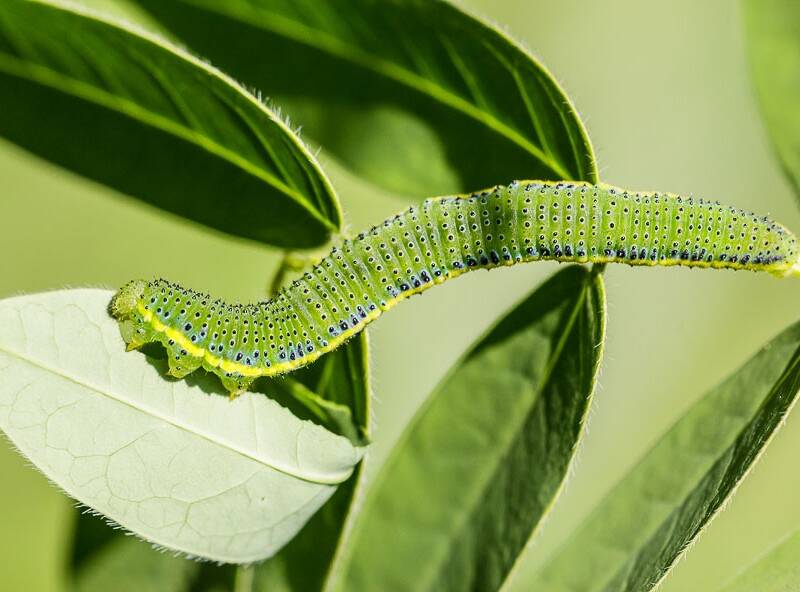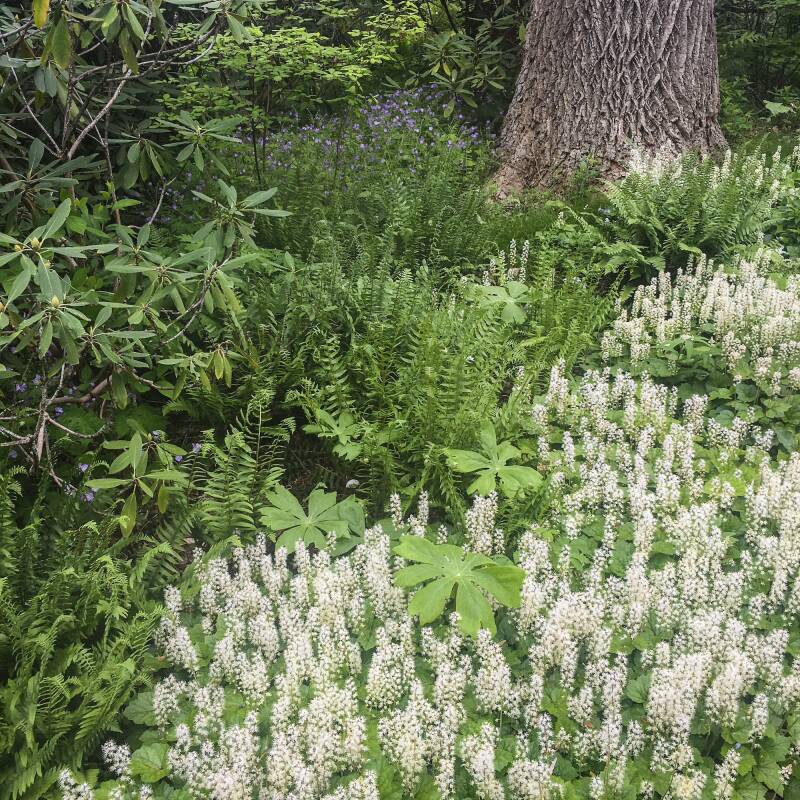While we are all beginning to understand the benefits of rewilding our gardens, the idea of a wild edible garden may be slightly more novel. But Poppy Okotcha, a model-turned-horticulturalist and one of a new generation of hugely influential Gen Z gardeners, is a passionate advocate of a much looser, wildlife-focused approach to growing your own food.
Okotcha first showed up on screens in the UK when her plant-packed houseboat in London appeared on the BBC TV show Gardener’s World. Now a couple of years later Okotcha has moved to a bigger plot in south Devon, where she has created a garden brimming with wildlife and produce. She’s also launched her own course—“A Seasonal Guide to Wild Gardening”—on Create Academy, bringing all her sustainable gardening know-how to a new audience.
Here’s the lowdown on what we can all do this autumn to prepare for a new (and more sustainable) growing season and create an edible forest of our own.
Photography courtesy of Create Academy.

Okotcha advises watching nature and using it as a guide for your own garden. Nothing is tidied up in the wild—in autumn as leaves fall and plants die back, the soil is covered with decaying matter that will protect the soil and, over time, will add nutrients. And this is what we need to replicate. If you are cutting back crops that have come to the end of their lives, leave their roots in the soil as they will rot away and also create useful channels in the soil structure. You can “drop and chop” plant material onto the soil surface, allowing organic matter to breakdown in situ. Feeding the soil—as naturally as possible is key—because then the soil will look after everything else.
The other side of preparing for winter is creating space for the creatures in our garden: Leave piles of leaves, messy corners, and plants still standing to house the insects and bugs that will help keep our gardens pest-free next spring and summer.



Plants are prized not just for food, but what else they can bring to the space. Even battered windfalls from her aged apple trees are put to use in the kitchen. Fruits that may not be good enough for eating can be chopped up and fermented to make apple cider vinegar—transforming what would otherwise be a waste product, in a process that requires no energy or refrigeration—into a delicious ingredient to use in cooking.


Late autumn and winter is the time for planning for the next growing season. Poppy advises drawing out planting plans (including the what, where, and when); she plans exactly what will go into her raised vegetable growing beds over the course of the whole year. To maximize your space focus on plants that are multi-functional. Comfrey is one of Okotcha’s favorites; its deep roots draw nutrients up to benefit other plants, and its leaves can be made into a rich plant feed. Furthermore, its flowers are great for pollinators, and it can be used as a herbal, too. This philosophy of utilizing all elements of a plant—for us and for wildlife—is central to the wild gardener’s approach.

Winter is also the time to plant the bare-rooted perennials that are key to the edible forest. Fruiting bushes and trees, and Japanese roses with big hips that make the best rosehip syrup are all best bought as bare roots; they are light to ship, they require no watering and the plant will adapt to its new home more readily, too.
For more on rewilding, see:
- Green-Wood: Rewilding Civic Lawns, Tombs Optional
- Set Your Garden Free: Start By Rewilding One Half, Says ‘Reformed’ Landscape Designer Mary Reynolds
- Ask the Expert: Regenerative Organic Gardener Emily Murphy on How to Rewild Your Landscape












Have a Question or Comment About This Post?
Join the conversation (0)